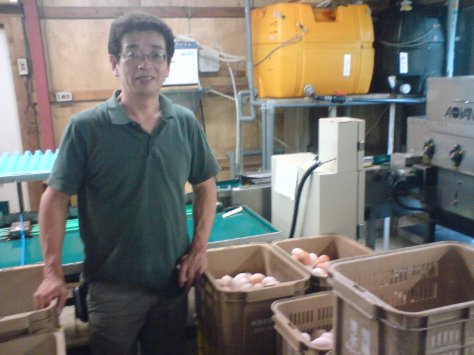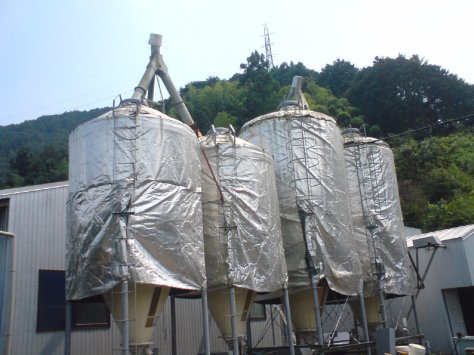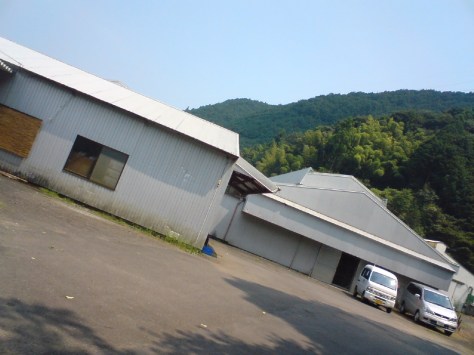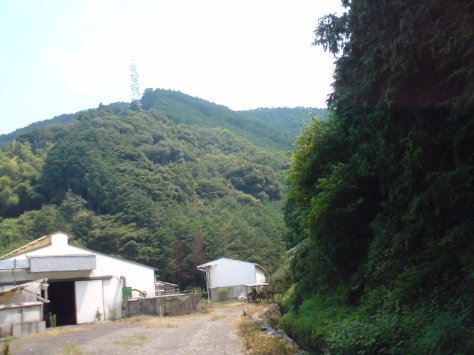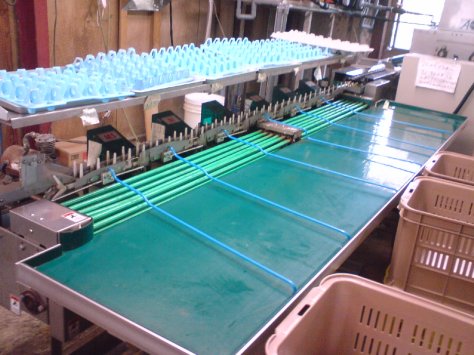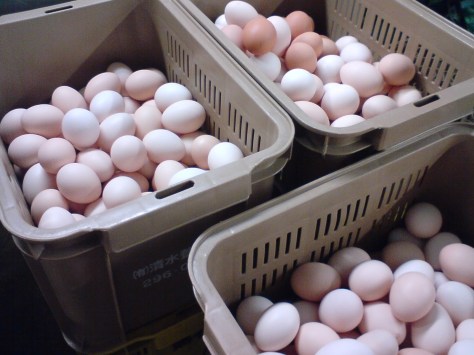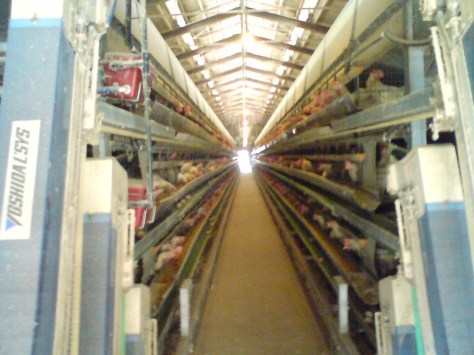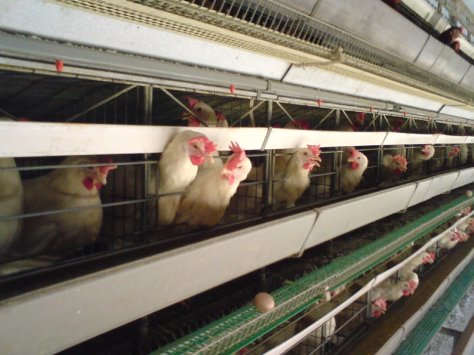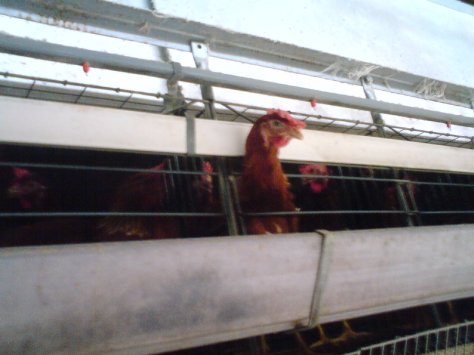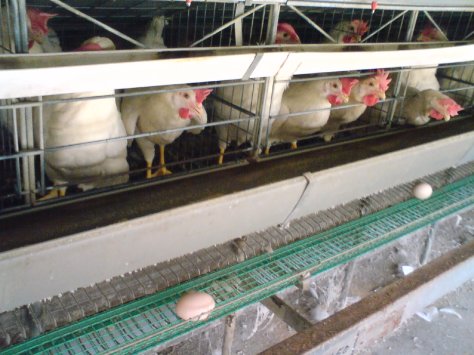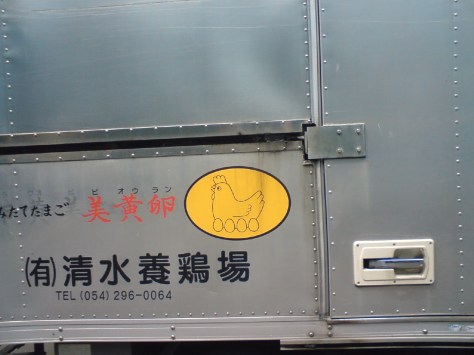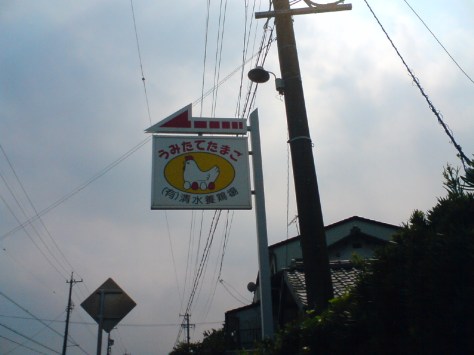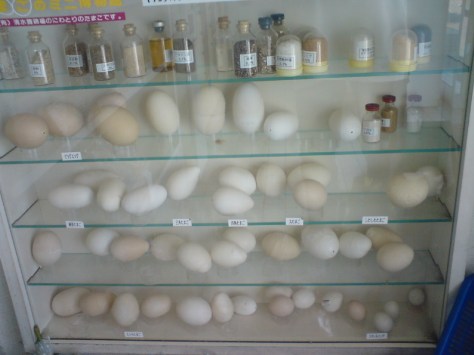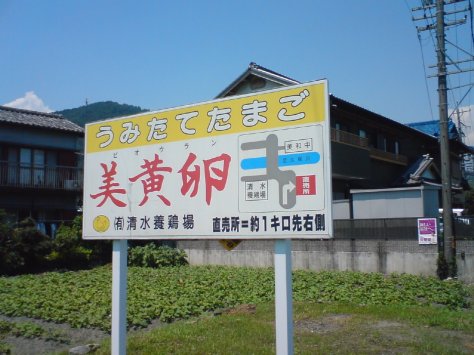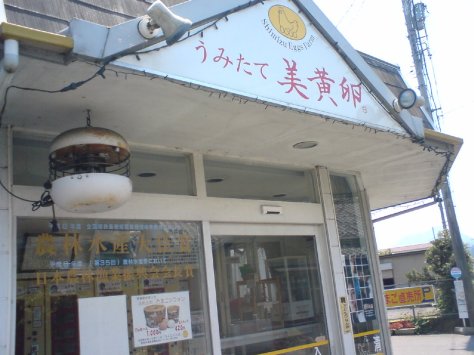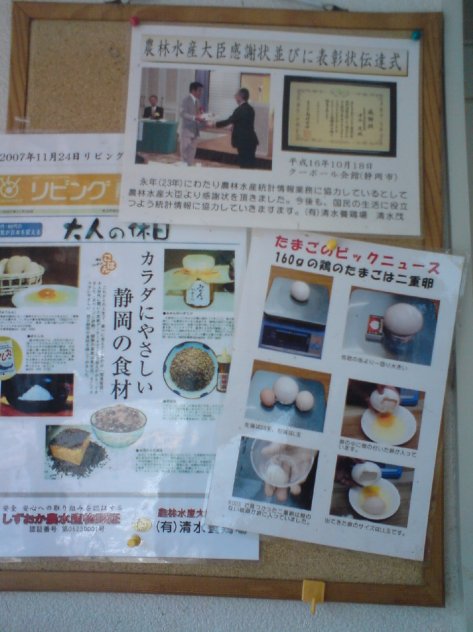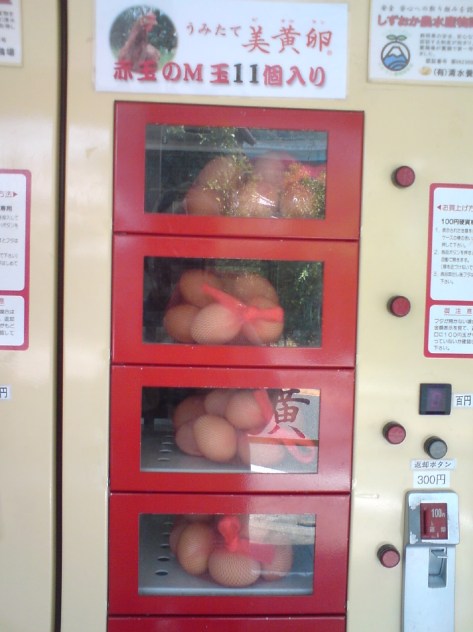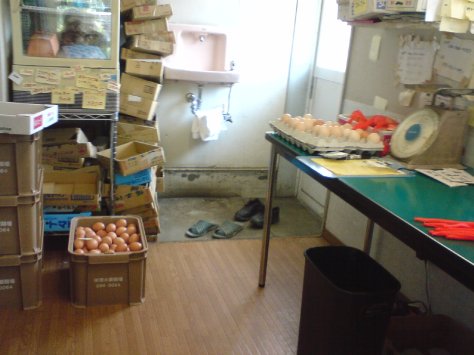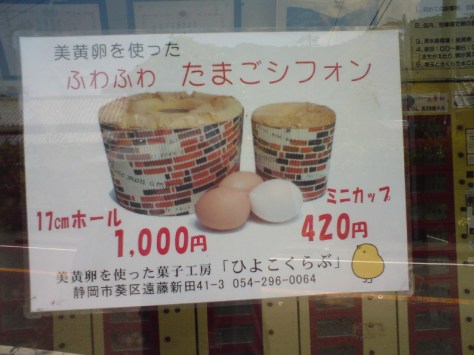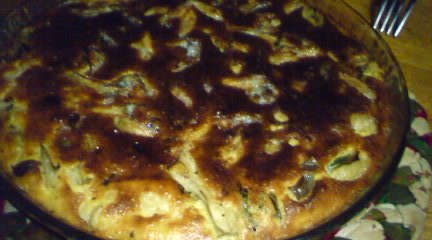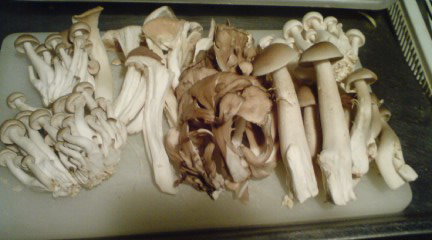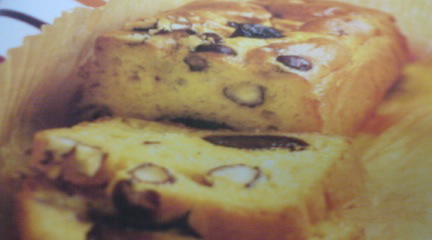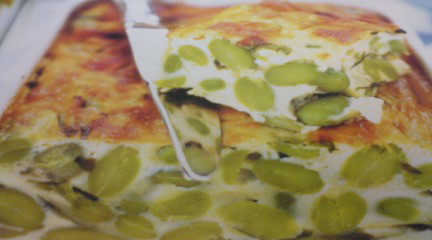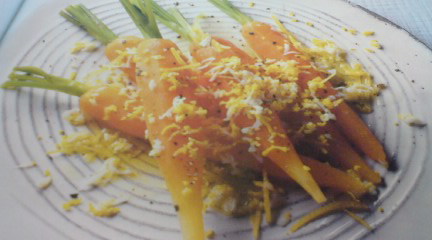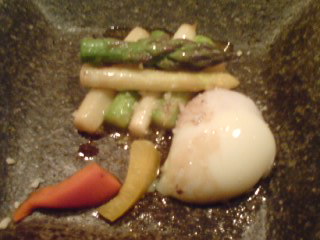Mr. Shigeru Shimizu/清水茂
As explained in my previous article I was back on the bicycle trail on Saturday with the difference was that I reached the place in record time in spite of the oppressive heat!
I wonder how many tonnes of feed are contained in these silos and accordingly, how many birds are inside the coops!
After all, the whole place covers no less than 1,500 tsubos (4,300 quare meters), big for a single producer in Japan!
The whole complex is surrounded by a tall hedge to protect it from the wind and help control the ambiant temperature.
Incidentally, I noticed that the silos were also protected against the variations of temperature.
I finally found the real entrance to the compound which opens at the very back, away from unknown eyes!
I quickly met Mr. Shimizu who asked me to wait for a while as he was busy with a small emergency. He offered me to stay inside in the cool, but I declined as snooping around is a bad habit of mine!LOL
It is located very much in the middle of the nature with a beautiful mountain background.
Hand egg-calibrating machine.
I was finally admitted inside, and knowing we were limited in time, I started firing questions.
-When was the egg farm founded?
-1996
-How long have you been actually working in the business?
-Let’s see. I’m 57. I started at 25. 32 years!
-When were you awarded a brand name for your eggs?
-In 1996 (that was quick!).
-How many hens (no cockerel needed whatsoever. I didn’t know!)?
-14,000 (geez!).
I had trouble keeping my hands off these beauties.
-Then how many eggs do you produce a day?
-About 1,200, but that’s little compared to industrial farms. We strive for quality, not quantity (even so, that’ s a lot to me!). We expect each to produce between 280 and 300 eggs.
-You need quite some staff, then?
-We are 10 in all. That’s enough, although we do have to work in shifts (that was said with a knowing smile, meaning Mr. Shimizu was working all day!).
-How long lasts a working day, then?
-7:00 to 7:00, 12 hours. The hens have to sleep. No forced laying here! (good to know!)
-How do you grade your eggs?
-By size first, into 7 different sizes. The largest are reserved for cake-shops and restaurants. The shell quality has to be the same, and the only way to check it is by touch, sight and experience.
-How many kinds of hens do you breed?
-Two only, Sakura and Momiji. It is enough since we strive for only one kind of yolk, whatever the color of the shell.
-That is a lot of hens, still. How long is their life span?
-As far as the egg-laying season is concerned, only one year. Which means an almost constant turn over. Even so, the hens have to be regulary vaccinated after we get the chicks from a designated hatchery. There are many keys to producing a good product (I didn’t have to ask the questions, as Mr. Shimizu warmed up to the subject. I had told him I was born in the country, and that the questions would not be too general, although I would be careful not to delve in trade secrets!):
The hens must naturally stay healthy. We personally check them everyday. This is not an industrial farm where productivity is placed above the animals’ comfort. They are actually penned in smaller numbers than usual.
Interestingly enough, the hens were not nervous at all. Their crests looked so healthy!
-How do you dispose of the droppings?
-Mixed with other ingredients, they will become fertilizer we sell to local farmers.
-Almost organic, then?
-Yes, almost.
-What about the hens which die on the way?
-We ask a specialized disposal company to take care of them.
-What do you do with the hens after the year has elapsed?
-We sell them to a specialized butcher.
-For how much?
-5 yen per head.
-That’s not much, isn’t it?
-You are telling me!
-What kind of feed do you nourish them with?
-A recipe of our own only.
Mr. Shimizu handed me then a pamphlet with all the ingredients clearly stated. I counted no less than 22, 12 of them not found in industrial egg farms. Enumerating them would be fastidious but I have kept the pamphlet for your questions. It is certainly impressive! At least I can affirm that the corn used is not GM and that some ingredients include garlic and paprika!
The egss! I came too late. They had already been collected!
One thing is for sure: a soft shell wouldn’t take that shock. No wonder Mr. Shimizu’s eggs are so popular!
The eggs are transported in a cute van!
Mr. Shimizu delivers his eggs to no less than 21 main distributing shops and to no less than 40 restaurants and cake shops. I counted them, but I’m pretty sure they do not include special customers!
The sign to the original shop!
Please remind me I have to buy some for the Missus’ tamagoyaki!
Bi-Ou-Ran
Shimizu Chicken Farm
421-2112, Shizuoka City, Aoi Ku, Endo Shinden, 41-3
Tel.: 054-296-0064
RECOMMENDED RELATED SITES:
Warren Bobrow, Bread + Butter, Zoy Zhang, Hungry Neko, Think Twice, Frank Fariello, Mangantayon, Hapabento, Elinluv Tidbit Corner, Tokyo Terrace, Maison de Christina, Chrys Niles,Lexi, Culinary Musings, Wheeling Gourmet, Comestiblog, Chronicles Of A Curious Cook, Tokyo Through The Drinking Glass, Tokyo Foodcast, Palate To Pen, Yellin Yakimono Gallery, Tokyo Terrace, Hilah Cooking, More than a Mount Full, Arkonite Bento, Happy Little Bento; 5 Star Foodie; Jefferson’s Table; Oyster Culture; Gourmet Fury; Island Vittles; Good Beer & Country Boys; Rubber Slippers In Italy; Color Food daidokoro/Osaka;/a; The Witchy Kitchen; Citron Et Vanille, Lunsj Med Buffet/Estonian Gastronomy (English), Cook, Eat, Play, Repeat, Chrisoscope
